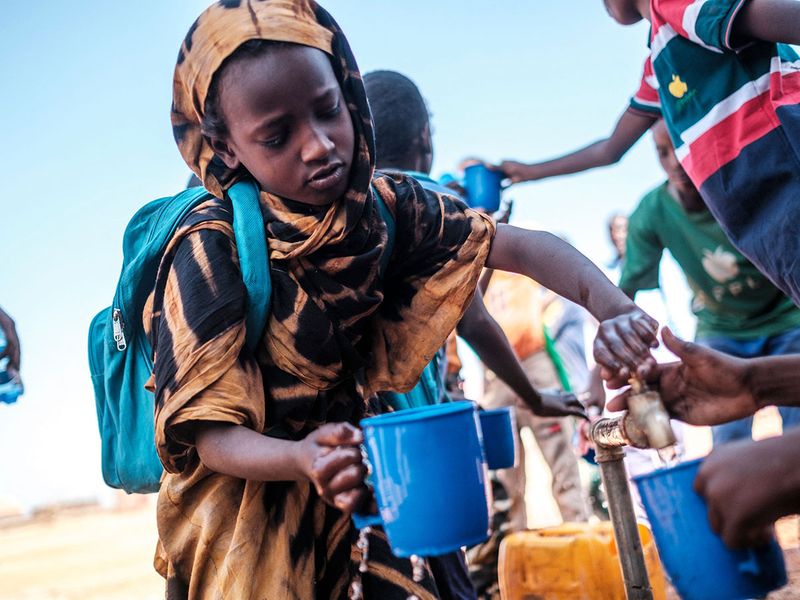K’Elafo, Ethiopia: From southern Ethiopia to northern Kenya and Somalia, around 22 million people are at risk of starvation as the worst drought in four decades grips the Horn of Africa.
In the affected areas, the inhabitants, who make a living mainly from herding and subsistence farming, are experiencing their fifth consecutive poor rainy season since late 2020.
The United Nations says 12 million people in Ethiopia, 5.6 million in Somalia and 4.3 million in Kenya are “acutely food insecure.”
The carcass of a dead animal lies in a field 30 kilometers from the town of Gode, Ethiopia.
Image credit: AFP
The total number has nearly doubled from 13 million at the start of 2022, the UN World Food Program said in a January 23 report.
Across the region, 1.7 million people have been forced to leave their homes for lack of water and pasture, it said.
weather shocks
The Horn of Africa is one of the regions most vulnerable to climate change and extreme weather events are occurring with greater frequency and intensity.
Since 2016, eight of the 13 rainy seasons have had below-average rainfall, according to data from the US-based Climate Risk Center.
The last famine was declared in Somalia in 2011, when 260,000 people – half of them children under the age of six – died of starvation, partly because the international community did not act fast enough, according to the UN.
At the time, the region had faced two poor rainy seasons, compared to five in the current drought.
Crops, already devastated by a locust invasion between 2019 and 2021, have been wiped out and livestock have suffered a similar fate.
The UN humanitarian agency, OCHA, estimated in November that 9.5 million head of cattle had perished.
Humanitarian groups warn that the situation is likely to worsen as the next rainy season, from March to May, is also expected to be below average.
Dire conditions in the Horn have been amplified by the war in Ukraine, which has contributed to rising food and fuel costs, disrupted global supply chains and diverted aid money out of the region.
Somalia: the epicenter
Somalia is the most affected country, with the drought affecting more than half of its population, around 7.85 million people.
In December, OCHA said the troubled nation was technically not yet in the grip of full-blown famine thanks to the response of aid agencies and local communities.
However, people were facing “catastrophic” food shortages, he said, warning that if aid is not increased, famine is expected in southern Somalia between April and June.
Agro-pastoral populations in Baidoa and Burhakaba districts and displaced people in Baidoa city and the capital Mogadishu were most at risk.
OCHA warned that by June, the number of people at the highest level in the UN’s five-scale food insecurity classification was expected to triple to 727,000 since October, meaning they have dangerously little access to food and they could face starvation.
children in danger

Children collect water at a school in the Farburo camp for internally displaced persons in the town of Adlale, Ethiopia.
Image credit: AFP
According to the UN children’s agency UNICEF, nearly two million children in Ethiopia, Kenya and Somalia require urgent treatment for severe acute malnutrition, the deadliest form of hunger.
It said in September that 730 children had died between January and July in feeding centers in Somalia, but that the true numbers were likely much higher.
Lacking water, milk and food, and often living in precarious conditions, the youngest become so weak that they are vulnerable to diseases such as measles and cholera, and their long-term growth may be restricted.
Some 2.7 million children have also stopped going to school, he said.
appeals for help
“There is no end in sight to the hunger crisis and hope is slowly fading,” said Xavier Joubert, Ethiopia director for the British charity Save the Children.
“There is no question that the need has grown to an enormous scale,” he said, adding that more funding was urgently needed.
Currently, only 55.5 percent of the $5.9 billion requested by the United Nations to deal with the crisis has been funded.
Early humanitarian action averted a famine in Somalia in




